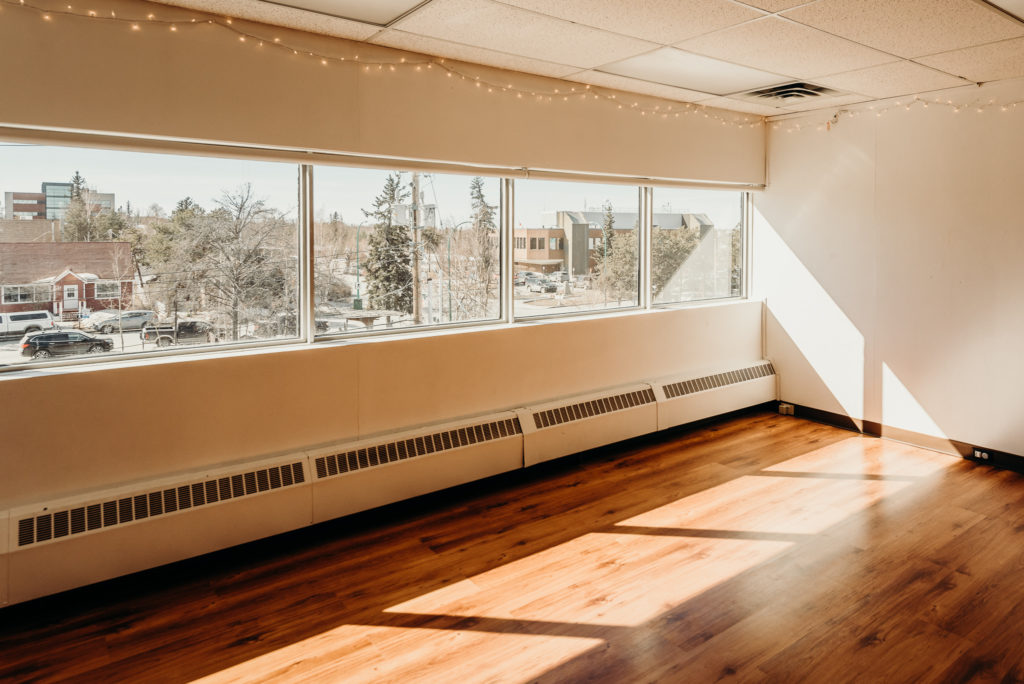Yoga is a wonderful practice for connecting the mind and body, calming the nervous system and increasing feelings of well-being.
That’s what got me hooked more than 20 years ago. That high I felt after a yoga practice. And so I practiced and my mind felt clear and my heart felt open.
But too much of a good thing lead me to physical imbalances. No single movement practice contains everything and my body was craving the movements I wasn’t doing. I was practicing the Ashtanga primary series – the same series of postures in the same order – nearly every day and even when I didn’t practice the specific series, I still practiced in the Vinyasa style which offered some variation on the sequence but had evolved from Ashtanga and was largely the same practice.
Here are two of the common standing forward bends I practiced back then.
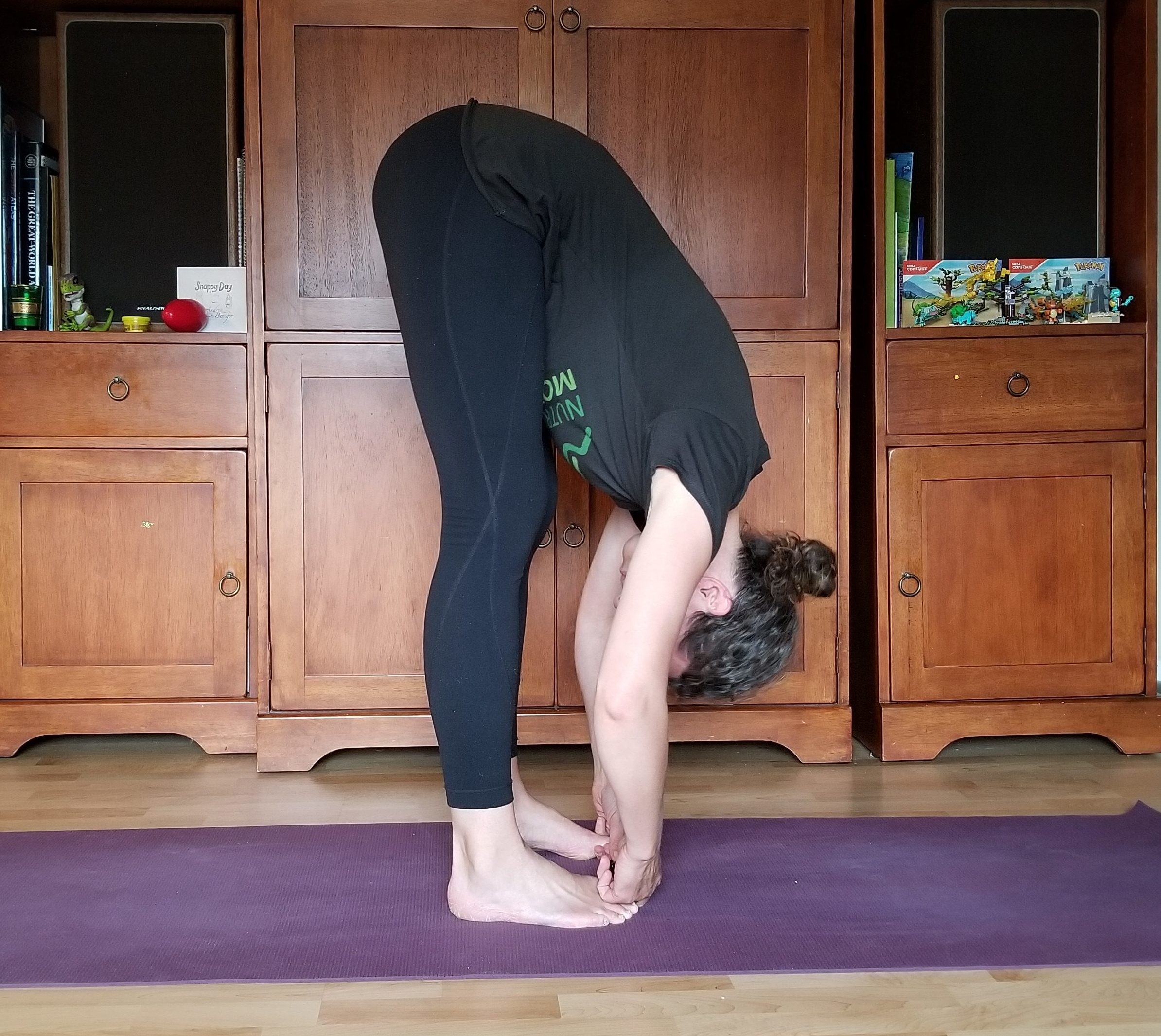
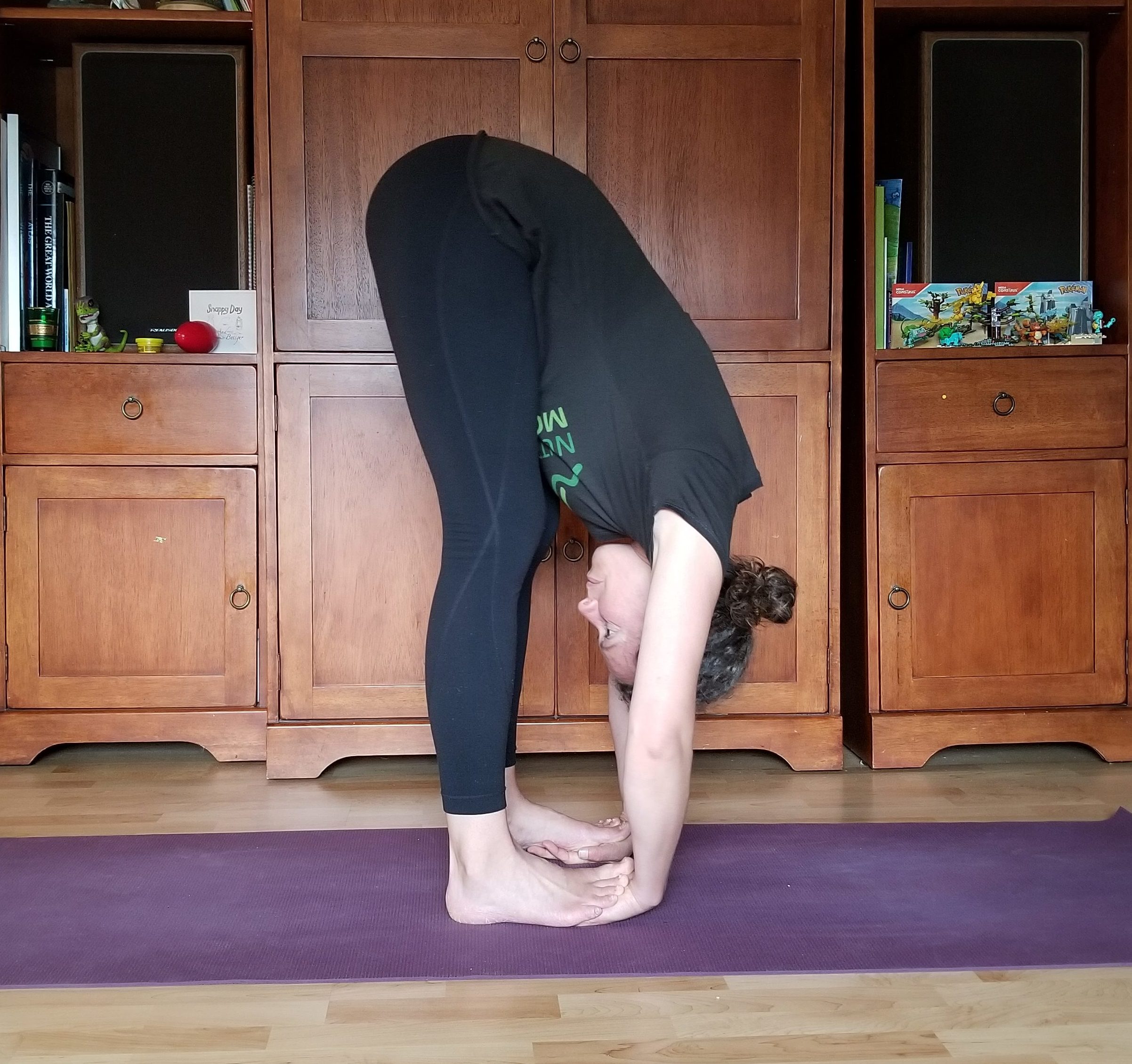
A lot of my yoga friends started getting injured. Hamstrings, hips and shoulders mostly. The media caught on and started warning about the dangers of over-stretching in yoga and the yoga community retaliated with alternative explanations trying to put out the fire. I started believing overstretching could be harmful and wondering if I should stop practicing yoga postures.
But that’s because I didn’t understand tendon science, compression, the importance of loading, progressive overload, tissue capacity and adaptation. If I’ve lost you with these terms please stay with me. I’m writing this blog to offer a primer on these things – because they are the key to what is needed (physically) to balance out a regular yoga practice (or any other regular movement or exercise practice for that matter – like running, swimming, or cycling.). I added the word “physically” in brackets as a reminder that yoga is so much more than the physical asana practice. The practice of yoga is more about the mind-body connection, developing self-awareness, and using that self-awareness to affect how we act in the world.
Because the physical aspect of the yoga practice (yoga asana or yoga posture practice) has become popular and many (often misguided) claims are made in yoga articles and websites about the physical health benefits of the practice, this blog is going to clarify some things about the physical practice and injuries (and will also be relevant even to non-yoga people in explaining injury prevention).
Coming back to whether over-stretching can cause injury, here’s the deal. As mentioned in my last blog post (about yoga alignment not being about safety), tissue injuries generally happen when a tissue (a tendon for example) is loaded beyond its ability to withstand that load. This is why we hear all this talk about “overloading” or “overuse” injuries. But a movement optimist might instead look at these as “underloading” injuries, or, even more optimistically, missed opportunities to progressively load.
This is confusing – how can we just make a decision to blame underloading instead of overloading for an injury? Aren’t they opposites? Well, not really, and here is why.
We know that the tissues of our body (muscles, tendons, ligaments, bones, fascia) need load to be resilient. Tendons and other soft tissues in the body respond well to tensile load (think of tensile load as pulling on the tissue) while bones respond well to compressive load (as it sounds). In yoga or other movement practices where we are “stretching” there is a tensile load being applied to the soft tissue (contrary to popular belief, stretching a muscle doesn’t equate to relaxing it), it is just a very low load. Strength training also applies a tensile load to the soft tissue, just a much greater load than in a static stretch.
Let’s take an example of a tendon in the body, when a load is applied to that tendon, the tendon has a capacity to withstand or resist that load. What is it resisting? Think of the tensile load being applied as trying to deform or change the shape of the tendon but the tendon in turn has an ability to resist being deformed – that ability to resist is the tendon’s capacity. If the load applied exceeds the tendon’s capacity to resist it, this is where injury or pain may occur. This is why the common language has called this an “overuse” or “overload” injury.
BUT THIS IS NOT THE WHOLE STORY.
Our bodies are amazing in that our tissues can adapt and increase their capacity to resist load! In the example of the tendon, if we regularly load the tendon within its upper capacity, it will adapt resulting in greater capacity. Although capacity is not the same thing as strength, to make it easier to comprehend you can think of it as the tendon adapting and getting stronger. As the tissue adapts we continue to increase the load. This is called progressive overload and despite the “overload” word it is a really good thing for our tissues. Over time we gradually increase the load being applied and the tendon continues to adapt and build its capacity. This is what we do for injury prehab (to intentionally work to prevent injury in sport).
While passive or static stretching does apply a tensile load, the load is too low to build capacity. Engaging in a regular yoga posture practice in a way that emphasizes passive flexibility and static stretching does not qualify as progressively loading for most people. This means that although a google search will give you a gazillion hits for articles telling you how stretching, yoga and flexibility prevent injury, the claim just doesn’t hold up when considering the science of how our tissues actually work.
Circling back again to whether overstretching does cause injury and if the rise in yoga injuries is being caused by overstretching, here is a summary of what’s been stated above about what we know:
- Stretching applies a tensile load
- Soft tissues respond well to tensile load
- Loading the tissue beyond its capacity can cause pain or injury
- Regularly and progressively loading (increasing the load over time) causes the tissue to adapt and build its capacity
- Passive or static stretching provides too low a load to stimulate adaptation and increase capacity
Putting all this together it just doesn’t add up that passive static stretching would cause an injury. The very low load of stretching doesn’t match the very high load needed for injury. So what are yoga injuries all about then?
Just as tendons and soft tissue respond well to tensile load, they do not respond well to compressive load. When we stretch to our end range of motion, the tendons are often compressed over the bone. Think of a standing forward bend – a tensile load is being applied to your hamstrings and at your deepest range of motion (if you are very flexible) your hamstring tendons rub (or are compressed) against your sitting bone (that bony part of your pelvis you can feel in your butt when seated).
If I was a better artist I would draw the skeleton of the pelvis with the sitting bone relative to the hamstring tendons in this hamstrings-lengthened position. Instead you get an arrow pointing to my butt with the hope that you can visualize what I’m talking about (if you stand up and hinge forward and back up a couple of times with your hand at your sitting bone you’ll feel this).
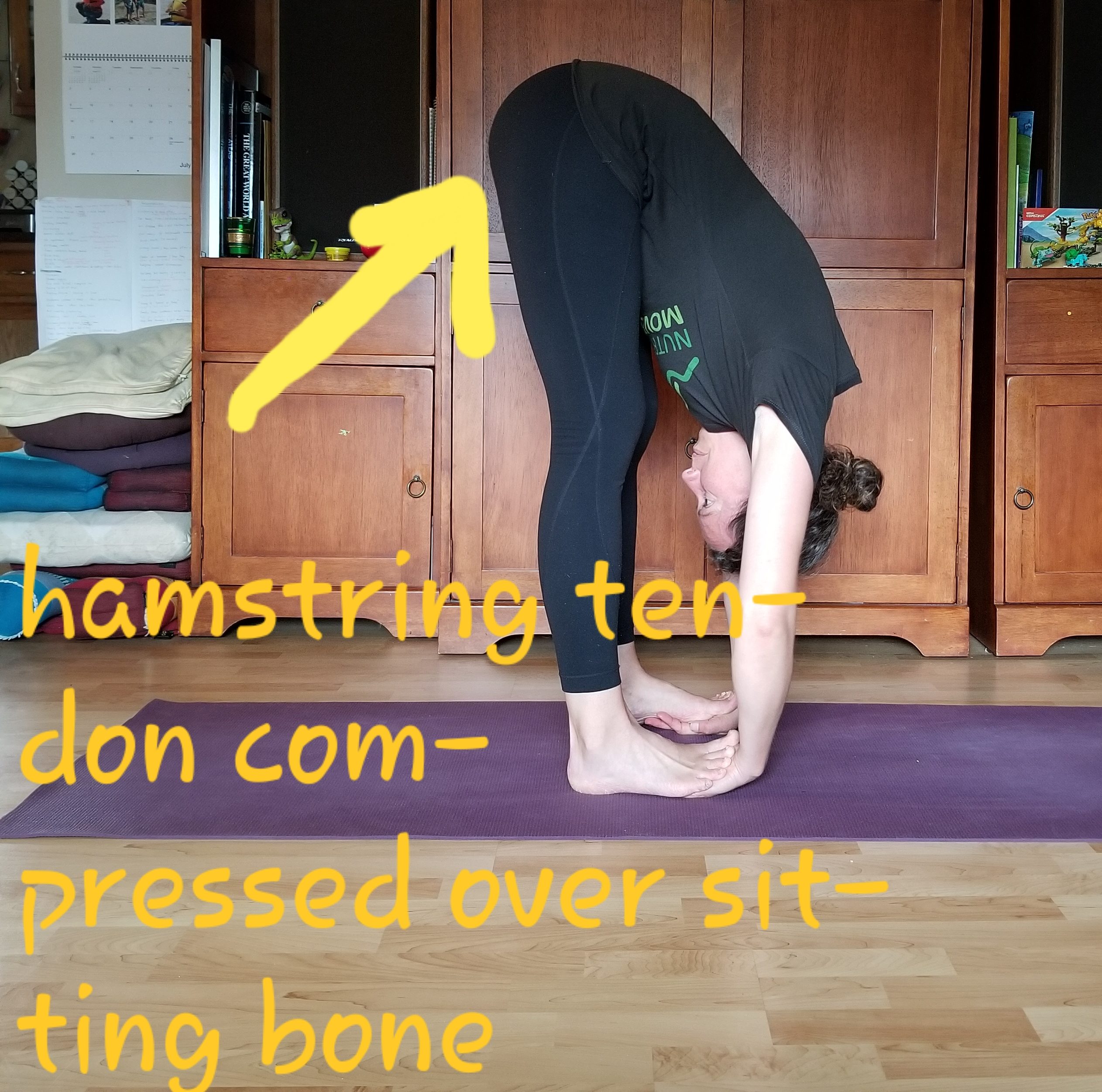
There is no consensus on the cause for common yoga injuries. The current most plausible theory about hamstring tendinopathies in yoga (as an example) is that we have “underloaded” hamstrings (from a lot of low tensile load stretching combined with the lack of practicing higher load hamstring strengthening). The hamstrings have been deconditioned through lack of progressive loading AND THEN taken to end-range in a forward bend where one of the tendons is compressed (remember tendons don’t respond well to compressive load) over the sitting bone. This combination may be what causes hamstring tendinopathies in yoga (or running also).
Is this an overstretching injury (or for runners – is this an overuse injury) or is it an underloading one (for both the yogi and the runner)?
I no longer believe we can injure our tissue by passively overstretching them. But I do believe many of us are not loading enough. And in many cases stretching more to try to feel better when we might be better off incorporating more load.
Is there a way to practice yoga that encourages more loading, more strength and less passive end-range flexibility? How can we include progressive loading in our yoga practice? Will we still love yoga and still find that mind-body connection and inner calm that comes from a regular practice?
I no longer include repetitive sequencing in my yoga practice. I also no longer aim to increase my end-range flexibility in my practice. I have more than enough flexibility, now I want to develop more strength at all ranges of motion. I want to give my body more load so that I can build capacity and resilience and feel amazing for years to come! I still love passive stretching – it feels good, it is calming to my mind, it has benefits beyond the physical. But after years of regularly practicing yoga in a way that encouraged passive flexibility, my muscles, tendons and other soft tissues were deconditioned. Adding strength into my practice has made all the little aches and pains go away. And I have found that connecting to and actively engaging my muscles in my practice requires more attention, focus and concentration, not less. It hasn’t taken away from what I loved about yoga in the first place, it’s enhanced it.
Instead of this passive forward bend (hamstring stretch)

I now prefer actively engaging my hamstrings. My forward bend often looks more like one of these:
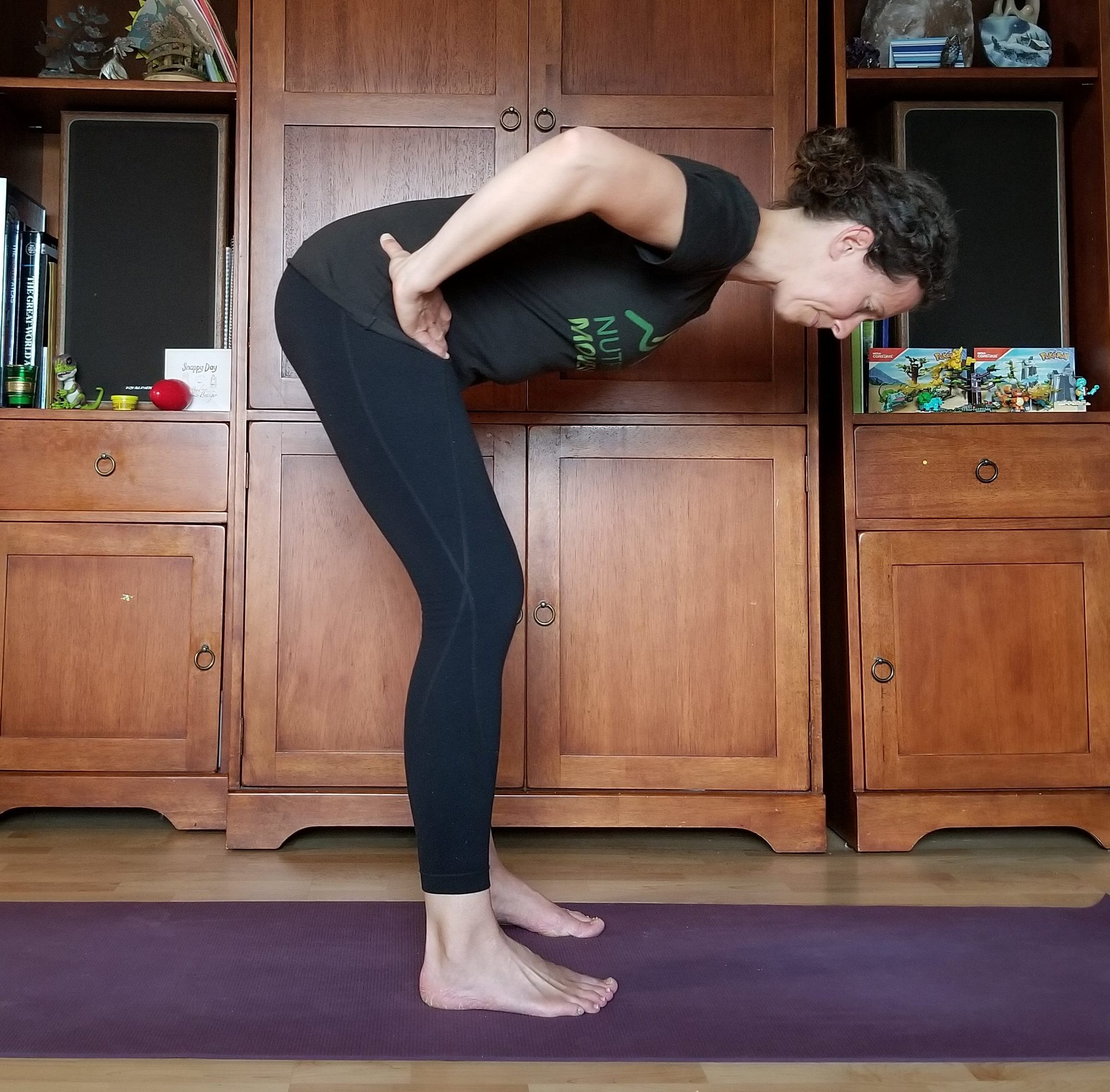
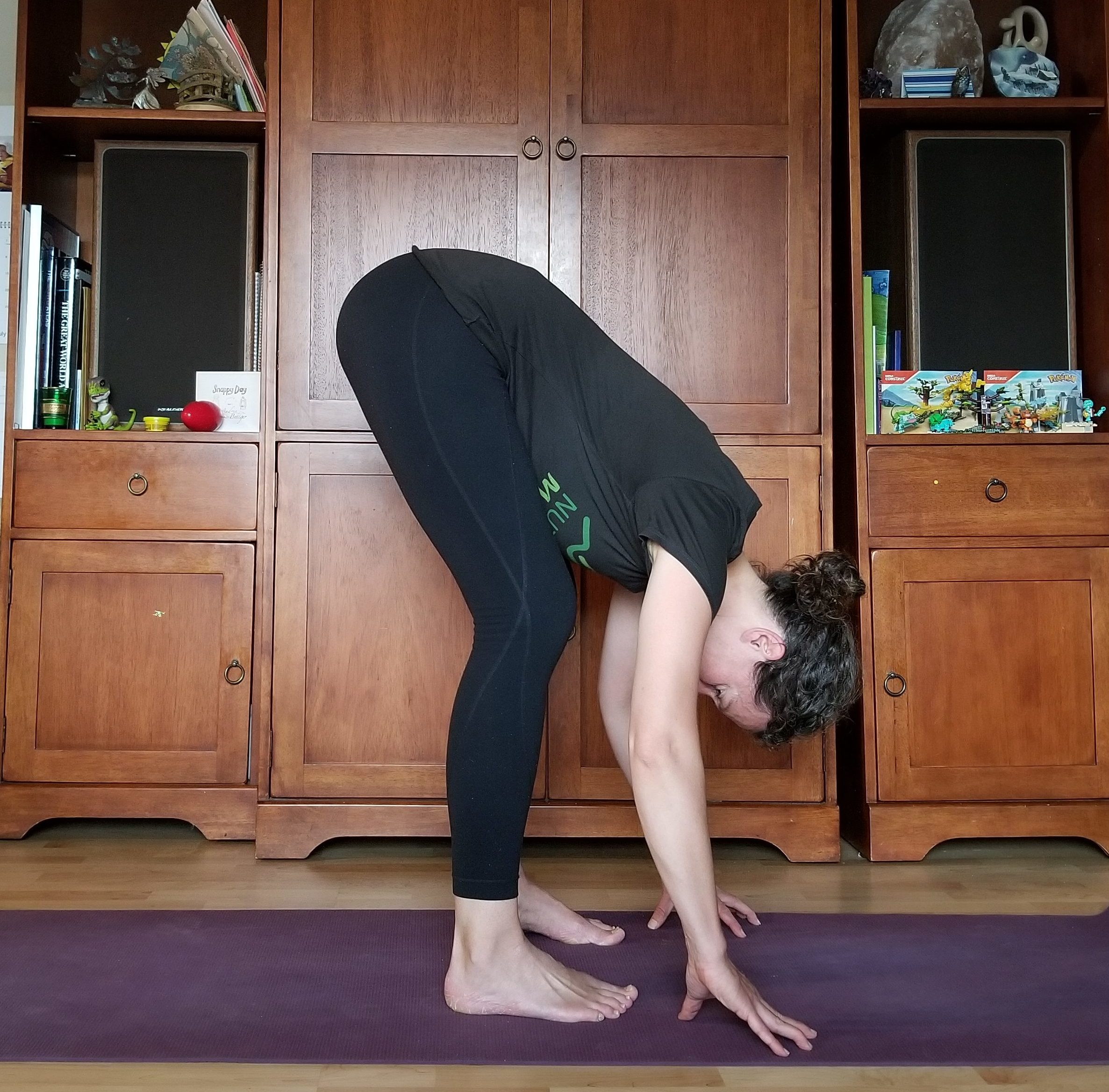
Instead of this extended hand-to-big-toe posture using my arm to lift my leg passively:
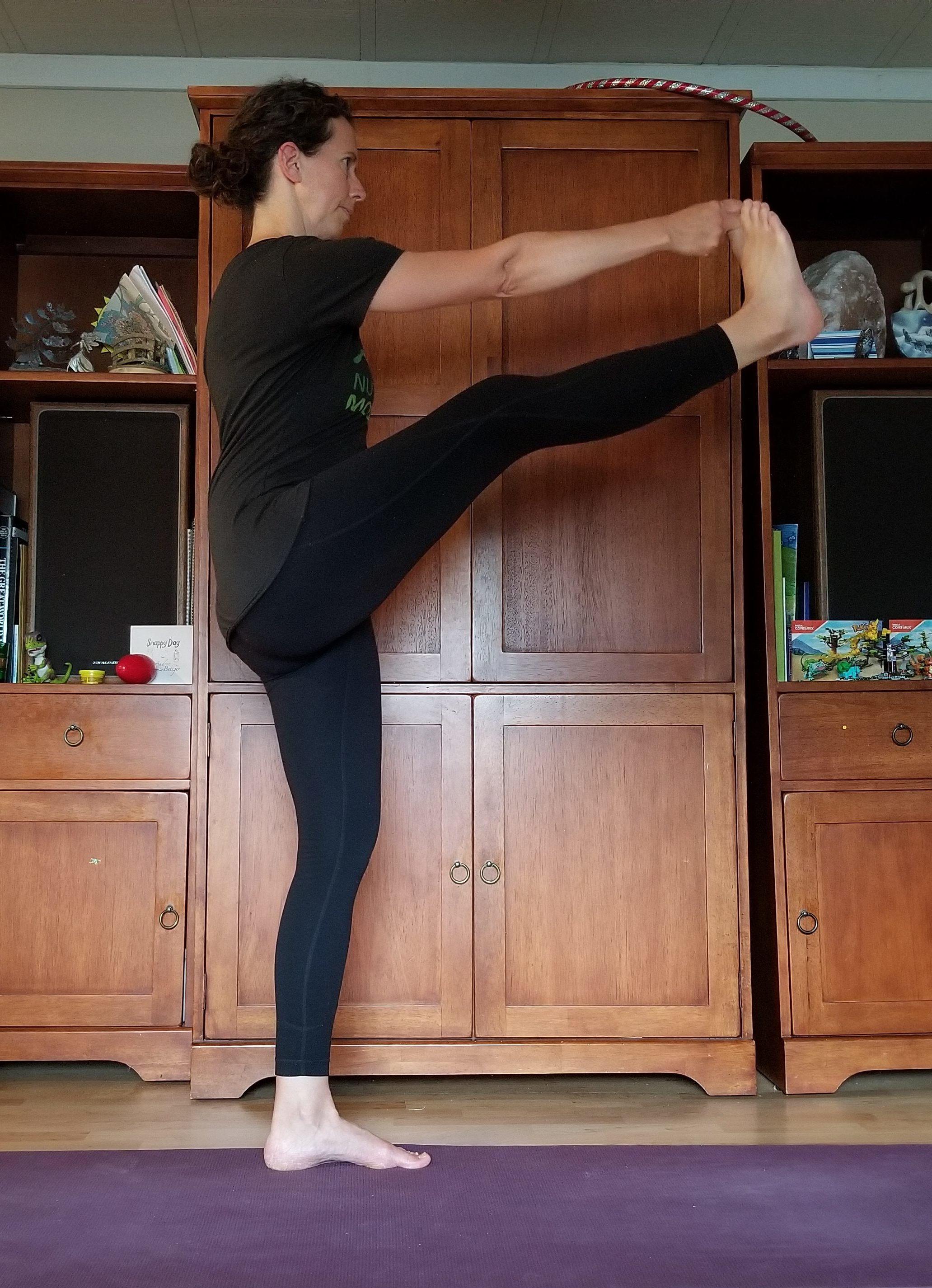
I prefer this active version where my hip flexors and other muscles in both my standing and lifted legs are doing the work:
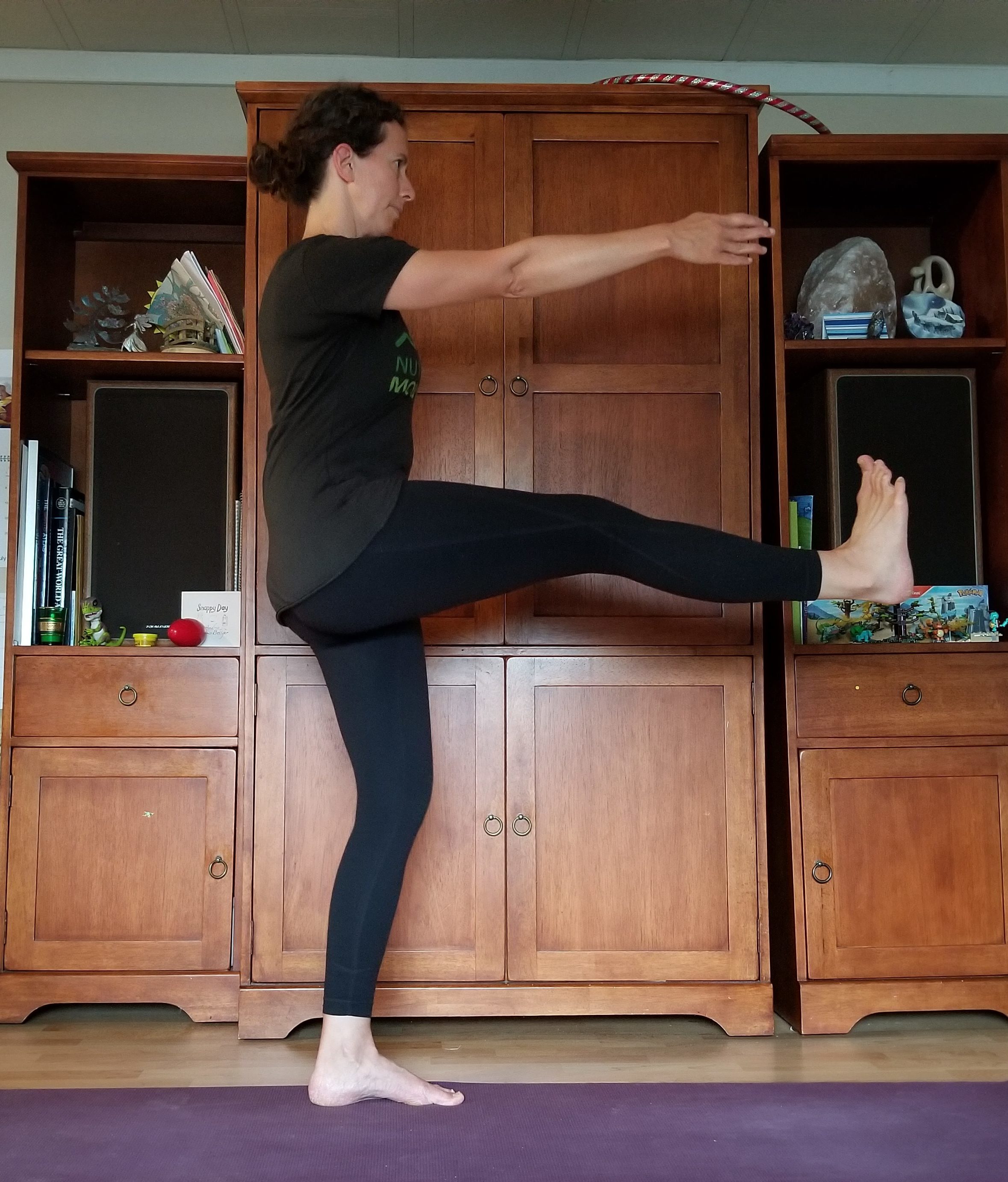
And sometimes my yoga practice even looks like this:
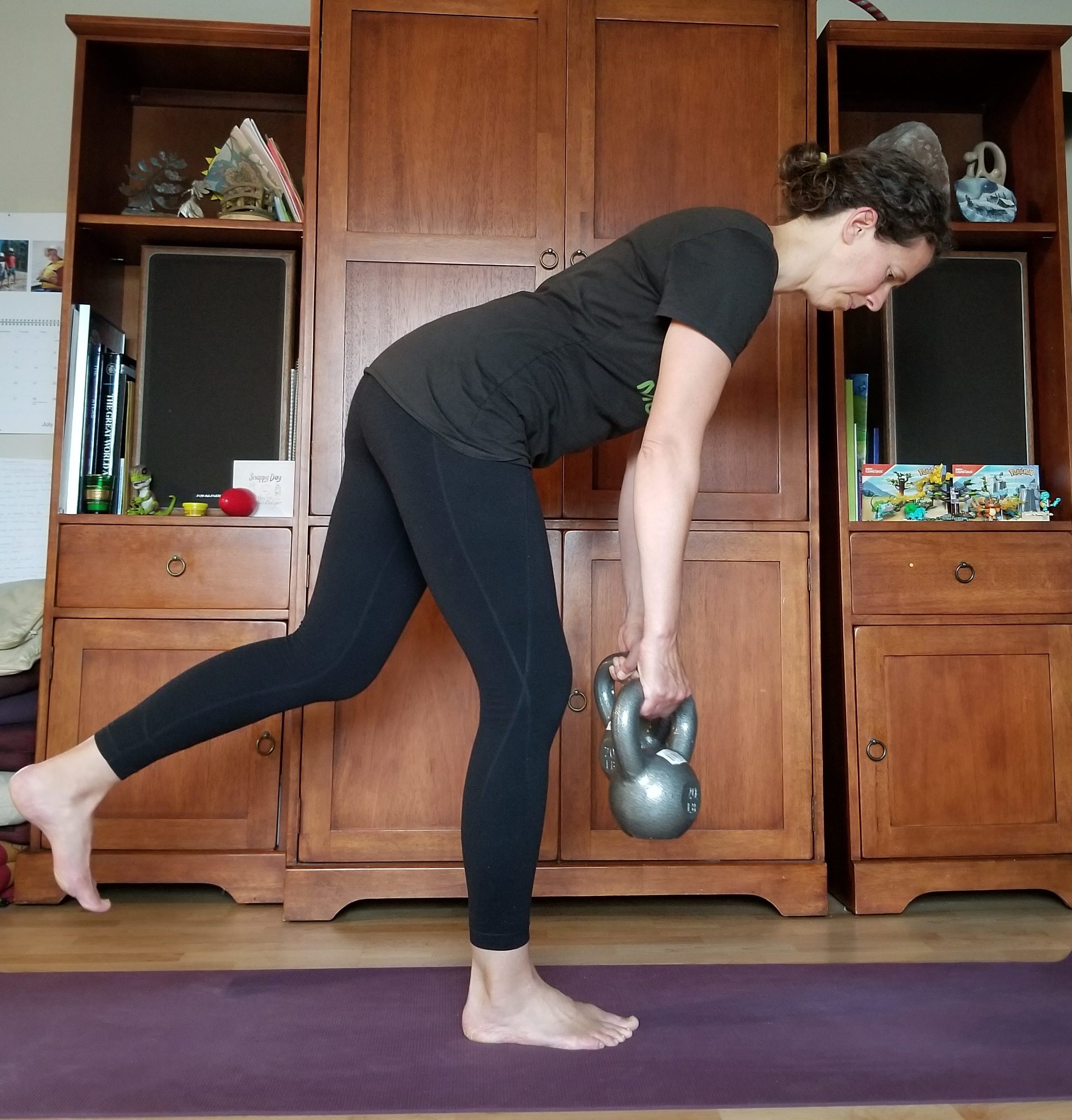
It might not look like what we think yoga should look like but it requires mental focus and concentration, cultivating mind-body connection, and developing self-awareness. To me this is yoga.
If you are interested in adding greater strength and mobility to your yoga practice, check out my new fall yoga classes here. I’ve got several weekly classes still offering some of the passive stretching and yoga we all love, but also bringing in a lot more active strength and mobility work.
If you have a comment on this blog, contact me to share your thoughts.


